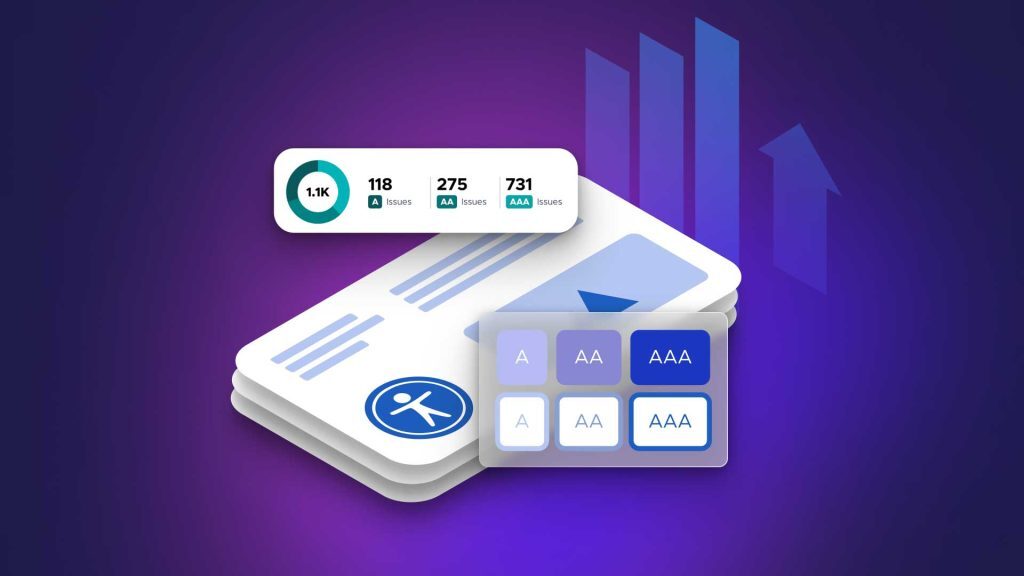Ensuring that your website is accessible to everyone, including people with disabilities, is both a legal obligation and the foundational pillars of design best practices. The Web Content Accessibility Guidelines (WCAG) provides a standardized framework for making web content accessible. But what exactly are these guidelines, and how can you ensure that your website is compliant?
Understanding WCAG
The WCAG guidelines were developed by the World Wide Web Consortium (W3C) to set a global standard for web accessibility. These guidelines are divided into three levels of conformance: A, AA, and AAA. Each level addresses different aspects of accessibility, ranging from basic to advanced requirements.
- Level A: The minimum level of conformance, covering the most basic web accessibility features.
- Level AA: This level addresses the most common barriers for users with disabilities. Most organizations aim to meet at least this level of compliance.
- Level AAA: The highest level of conformance, ensuring optimal accessibility, though it may be challenging to achieve across all content.
The Importance of Compliance
Being compliant with WCAG is crucial for several reasons:
- Legal Compliance: In many countries, including Canada, laws like the Accessible Canada Act and the Accessibility for Ontarians with Disabilities Act (AODA) mandate web accessibility. Non-compliance can lead to legal repercussions, including fines and lawsuits.
- Ethical Responsibility: Ensuring that your website is accessible demonstrates a commitment to inclusivity, making your digital content available to a wider audience.
- Enhanced User Experience: Accessible websites are often easier to use for everyone, not just people with disabilities. This can lead to higher engagement, improved SEO, and a better overall user experience.
- Broader Reach: Compliance with accessibility standards like WCAG and the Canadian web accessibility laws if you’re targeting a North American audience, can increase your reach to a broader audience, including users with disabilities.
How to Ensure WCAG Compliance
- Conduct an Accessibility Audit: Start with an in-depth audit of your website. Utilize tools like accessibility checkers to identify areas where your site may not meet WCAG standards. Keywords such as “accessibility canada” and “accessibility requirements” can help you find resources and guidelines.
- Focus on Perceivable Content: Ensure that all content is perceivable. This includes providing text alternatives for non-text content, ensuring that all multimedia has captions or transcripts, and structuring content logically for screen readers.
- Ensure Operability: Your website must be fully operable via keyboard, as many users with disabilities rely on keyboard navigation.
- Make Content Understandable: Use clear, simple language and consistent navigation to help users understand your content. Avoid using unnecessary jargon.
- Robust Content: Ensure that your content is compatible with assistive technologies. Use proper HTML tags, ARIA landmarks, and follow coding best practices to support accessibility features.
- Test with Real Users: Engage people with disabilities to test your website. Their feedback is invaluable and can provide insights that automated tools may miss.
Accessibility Laws in Canada
In Canada, compliance with the Accessible Canada Act and AODA is mandatory for many organizations. These laws align with WCAG guidelines and are part of Canada’s broader commitment to creating an inclusive society. The Accessible Canada Act specifically addresses barriers in areas under federal jurisdiction, making it essential for businesses to ensure their digital presence complies with these standards.
Tools and Resources
Several tools and resources can help you assess and improve your website’s accessibility:
- Accessible Canada Act: Offers detailed guidelines on compliance and best practices for ensuring that your website meets national standards.
- Web Accessibility Evaluation Tools: Use tools like WAVE, Axe, and Lighthouse to check your website’s conformance to WCAG guidelines.
- Color Contrast Checker: Speer Color Contrast Checker is a handy tool to ensure that your text and background colors meet the contrast requirements specified by WCAG.
- Canadian Government Resources: Websites like accessible.canada.ca and canada.ca provide additional resources on web accessibility in Canada.
Compliance with WCAG guidelines is essential for ensuring that your website is accessible to all users, including those with disabilities. By following these steps and utilizing available resources, you can make your digital content more inclusive, improve user experience, and protect your business from legal risks.

